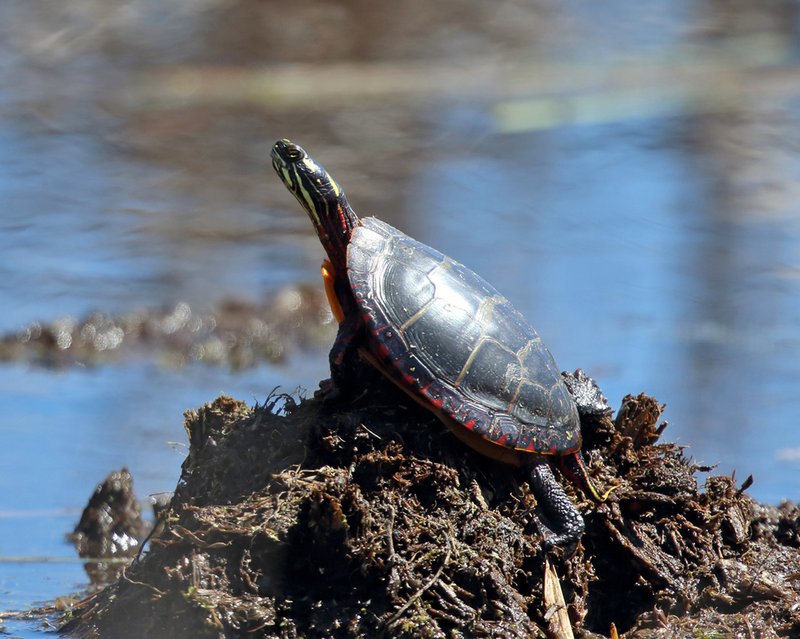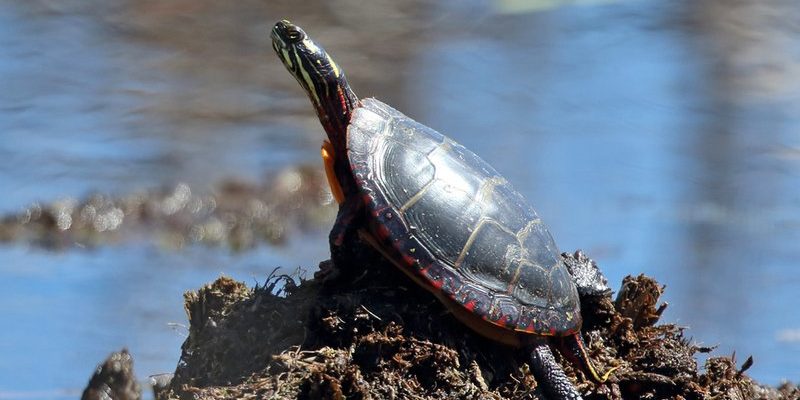
So, let’s dig into the heart of the matter: Is the painted turtle endangered? And what’s being done to help these colorful reptiles? By understanding these questions, we can appreciate both the challenges they face and the efforts made to protect them. It’s a bit like brushing up on the latest technology; knowing how to troubleshoot issues can make a big difference in keeping everything running smoothly.
What is the Painted Turtle?
The painted turtle (Chrysemys picta) is one of North America’s most recognizable turtles. They’re often found in freshwater environments like ponds, marshes, and lakes. Their vibrant shells, which can range from dark green to almost black with bright yellow or red stripes, are truly eye-catching.
You might be surprised to hear that there are actually four subspecies of painted turtles, each with slightly different shell patterns and colors. Some you might know include the Western painted turtle and the Eastern painted turtle. These turtles can live for decades, sometimes up to 50 years! That means they’ve seen plenty of changes in their environments over their lifetime.
But with great beauty comes great vulnerability. Pollution, habitat destruction, and climate change are just a few factors putting pressure on their survival. Understanding what makes these turtles special and the dangers they face is essential.
Current Conservation Status of the Painted Turtle
So, is the painted turtle really endangered? Here’s the deal: While most painted turtle populations are currently stable, certain subspecies are facing serious threats, which has led to some regional concerns about their conservation status. The International Union for Conservation of Nature (IUCN) lists the painted turtle as “Least Concern,” but that doesn’t mean we should ignore the risks they encounter.
Factors like habitat loss due to urban development, water pollution from agricultural runoff, and climate change are causing declines in some areas. For example, painted turtles often rely on specific nesting sites along riverbanks or shorelines, which can be severely impacted by human activity. This leads to not just a decrease in population but also affects their genetic diversity—an important factor in the health of any species.
Understanding their conservation status is crucial because it helps guide efforts and policies aimed at protecting these turtles and their habitats.
Key Threats to Painted Turtles
Now, let’s break down some of the main threats faced by painted turtles:
- Habitat Loss: As cities expand and agricultural lands increase, turtles lose their natural habitats. This makes it harder for them to find food, mate, or nest safely.
- Pollution: Chemicals from farms and factories can contaminate the waters where these turtles live, causing health issues and even death.
- Climate Change: Changes in temperature and weather patterns can disrupt breeding cycles and habitat conditions, endangering young turtles.
- Road Mortality: As turtles try to cross roads to find new habitats or nesting sites, many sadly end up as roadkill.
Each of these threats contributes to the challenges painted turtles face in the wild. Recognizing these issues is a step towards understanding how we can help.
Conservation Efforts in Action
You might be wondering, “What’s being done to help?” Thankfully, various organizations and initiatives are in place to support painted turtle populations. Here are some of the key efforts:
1. Habitat Protection: Conservation groups work to protect critical habitats, ensuring turtles have safe places to live, nest, and thrive. This can involve creating protected areas or restoring damaged ecosystems.
2. Pollution Control: Many organizations are focusing on reducing pollution in freshwater habitats. This involves advocating for better waste management practices, stricter regulations on chemical use, and promoting public awareness campaigns.
3. Research and Monitoring: Scientists are studying painted turtle populations to better understand their needs and behaviors. Tracking their movements and population health helps identify at-risk areas and allows for targeted conservation efforts.
4. Public Engagement: Many organizations involve local communities in conservation efforts. Educating people on how to coexist with wildlife—like building turtle-friendly road crossings—can make a big difference in turtle protection.
These combined efforts show that conservation is a community effort. Every little bit counts in preserving these beautiful creatures for generations to come.
How You Can Help
So, what can you do to get involved? Here are a few simple yet effective ways to contribute to the conservation of painted turtles:
1. Support Local Conservation Groups: Look for organizations in your area that protect local wildlife and habitats. Donations, volunteering, or spreading the word can greatly support their efforts.
2. Be Mindful of Pollution: Reduce the use of chemicals in your garden, properly dispose of hazardous waste, and participate in local clean-up days. Clean water is vital for painted turtles.
3. Drive Safely Near Water Bodies: Be cautious when driving near ponds and lakes, especially during nesting season when turtles might be crossing roads.
4. Educate Others: Share your knowledge about painted turtles and their conservation needs. The more people know, the more support they can give to these efforts.
Every small action can lead to big change. By being aware and engaged, you’re making a difference for painted turtles and the ecosystems they inhabit.
The Future of Painted Turtles
Looking ahead, the future of painted turtles depends on the continued efforts of conservationists and the support of the public. It’s a bit like caring for a garden; with attention and care, it can flourish.
The painted turtle has a lot of potential for recovery, especially if we focus on habitat protection, pollution control, and community involvement. Remember, awareness is the first step towards action, and even the smallest actions can contribute to a bigger picture.
In conclusion, while the painted turtle isn’t currently categorized as endangered, the threats they face are real, and the need for conservation is urgent. By understanding the challenges and supporting efforts to protect them, we can ensure these splendid creatures remain a vibrant part of our landscape. Let’s work together to keep the painted turtle swimming happily in our waters for years to come!

